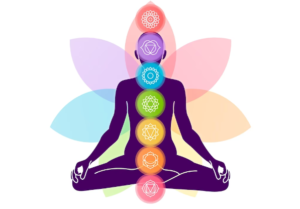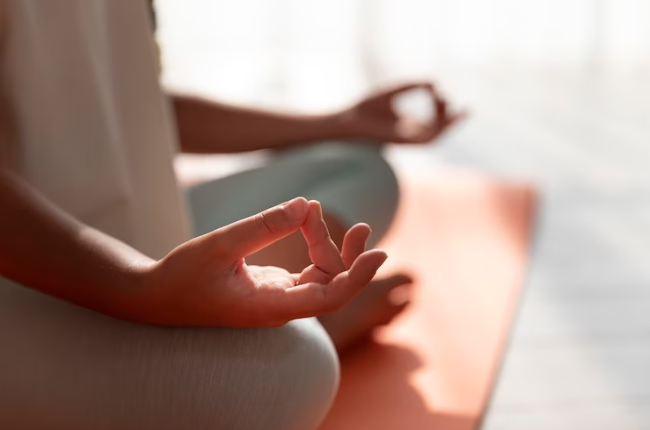Meditation: Imagine your mind as a wild river, constantly rushing with thoughts, worries, and anxieties. You try to navigate through the rapids, but it feels like you’re always on the verge of being swept away.
Now imagine finding a tranquil pool within that river, a place where you can rest and find peace. That’s what meditation can do for you – it can help you calm the storm in your mind and find a sense of inner stillness.
Meditation has been practiced for thousands of years and is now gaining popularity in the Western world as a tool for improving mental and physical health. It’s a simple practice that involves focusing your attention on a specific object or activity, such as your breath or a mantra, and letting go of distracting thoughts.
In this article, we will take a deep dive into the healing power of meditation, exploring its origins, benefits for mental and physical health, and providing a step-by-step guide for how to meditate. Whether you’re new to meditation or a seasoned practitioner, this article will provide you with the knowledge and tools to incorporate this powerful practice into your daily routine.

The Origins of Meditation
You’re about to learn where meditatum originated from and how it has evolved over time.
Meditation has a long history and cultural significance. It is believed to have originated in ancient India over 5,000 years ago.
meditatum was initially practiced as part of the Hindu tradition and later became a central aspect of Buddhism. During this time, meditation was seen as a means to reach enlightenment and liberation from the cycle of rebirth.
Over the centuries, meditatum has spread to other parts of the world and has been adapted to fit different cultures and traditions. In China, it became a part of Taoism, while in Japan, it evolved into Zen meditation.
In the West, meditatum gained popularity during the 1960s as people sought alternative ways to manage stress and anxiety. Today, meditation is practiced by people of all backgrounds, cultures, and religions, and it is recognized for its numerous health benefits.
Benefits of Meditation for Mental Health
You’ll notice a significant improvement in your mental health by incorporating regular meditation into your daily routine, as the saying goes, ‘a calm mind brings inner strength and self-confidence.’
Mindfulness techniques, which are often used in meditation, have been shown to reduce symptoms of anxiety, depression, and stress.
Research has found that meditatum can increase the thickness of the prefrontal cortex, which is responsible for attention, decision-making, and emotional regulation.
In addition, meditation can increase the production of serotonin and dopamine, neurotransmitters that promote feelings of well-being and happiness. This means that regular meditatum can help improve your mood and reduce feelings of anxiety or depression.
Furthermore, meditatum has been shown to increase empathy, compassion, and emotional intelligence, which can improve your relationships with others.
Incorporating meditation into your daily routine can have a significant positive impact on your mental health, leading to a happier and more fulfilling life.
Benefits of Meditation for Physical Health
Incorporating regular mindfulness techniques into your daily routine can have a positive impact on your physical health. meditatum has been shown to improve the mind-body connection, which can lead to a reduction in inflammation and pain. This is especially beneficial for those who suffer from chronic pain conditions, such as arthritis or fibromyalgia.
Studies have also found that meditatum can improve sleep quality, which is crucial for overall physical health. A lack of sleep can lead to a weakened immune system, increased risk of chronic diseases, and even weight gain.
By practicing meditation regularly, you can improve your sleep quality and wake up feeling refreshed and energized. So, if you’re looking for a natural way to improve your physical health, incorporating meditation into your daily routine is definitely worth a try.
How to Meditate: A Step-by-Step Guide
Get ready to embark on a journey of ultimate relaxation and mind-body rejuvenation, as we guide you through a step-by-step process of calming your mind and centering your thoughts.
Meditation can seem daunting at first, but with practice, it can become a habit that improves your overall wellbeing. To start meditating, find a quiet and comfortable place where you won’t be disturbed. You can sit on a chair or cross-legged on a cushion, whichever feels more comfortable for you.
Begin by focusing on your breath, taking deep breaths in through the nose and out through the mouth. Pay attention to the sensation of the air moving in and out of your body. If your mind starts to wander, gently bring your focus back to your breath.
This is where mindfulness exercises come in handy, allowing you to observe your thoughts without judgment. With practice, you’ll find it easier to stay present in the moment as you meditate, letting go of worries and anxieties that may be weighing you down.
Incorporating Meditation into Your Daily Routine
Make meditation a part of your daily routine by finding a time and place that works for you. Whether it’s in the morning before starting your day or in the evening as a way to wind down before bed, incorporating meditation into your daily routine can help you reap its many benefits.
To start, find a quiet and comfortable space where you can sit or lie down without any distractions. Then, begin with mindful breathing exercises to help calm your mind and focus your attention. You can also experiment with visualization techniques, such as imagining yourself in a peaceful setting or visualizing positive outcomes for your day.
Once you’ve established a routine, try to make meditation a regular part of your day. This could mean setting aside a specific time each day to meditate, or simply incorporating it into other daily activities, such as stretching or taking a walk.
Remember that meditation is a practice, and like any practice, it takes time and effort to see results. But with consistent effort and dedication, you can experience the many benefits of meditation, including reduced stress, increased focus, and improved overall well-being.
So why not give it a try and see how it can transform your daily routine?
Conclusion
Now that you’ve learned about the healing power of meditation, it’s time to take action and incorporate it into your daily routine. By doing so, you can reap the benefits of reduced stress, improved mental clarity, and a stronger immune system.
Imagine yourself sitting quietly, surrounded by a calming aura, as your thoughts slow down and your breathing becomes steady and serene. You’re at peace, in tune with your mind and body.
Take a moment to visualize this tranquil scene, and then make it a reality by practicing meditation regularly. Whether you’re a beginner or an experienced practitioner, there are many resources available to help you get started.
So take the first step on your healing journey today and discover the transformative power of meditation.



